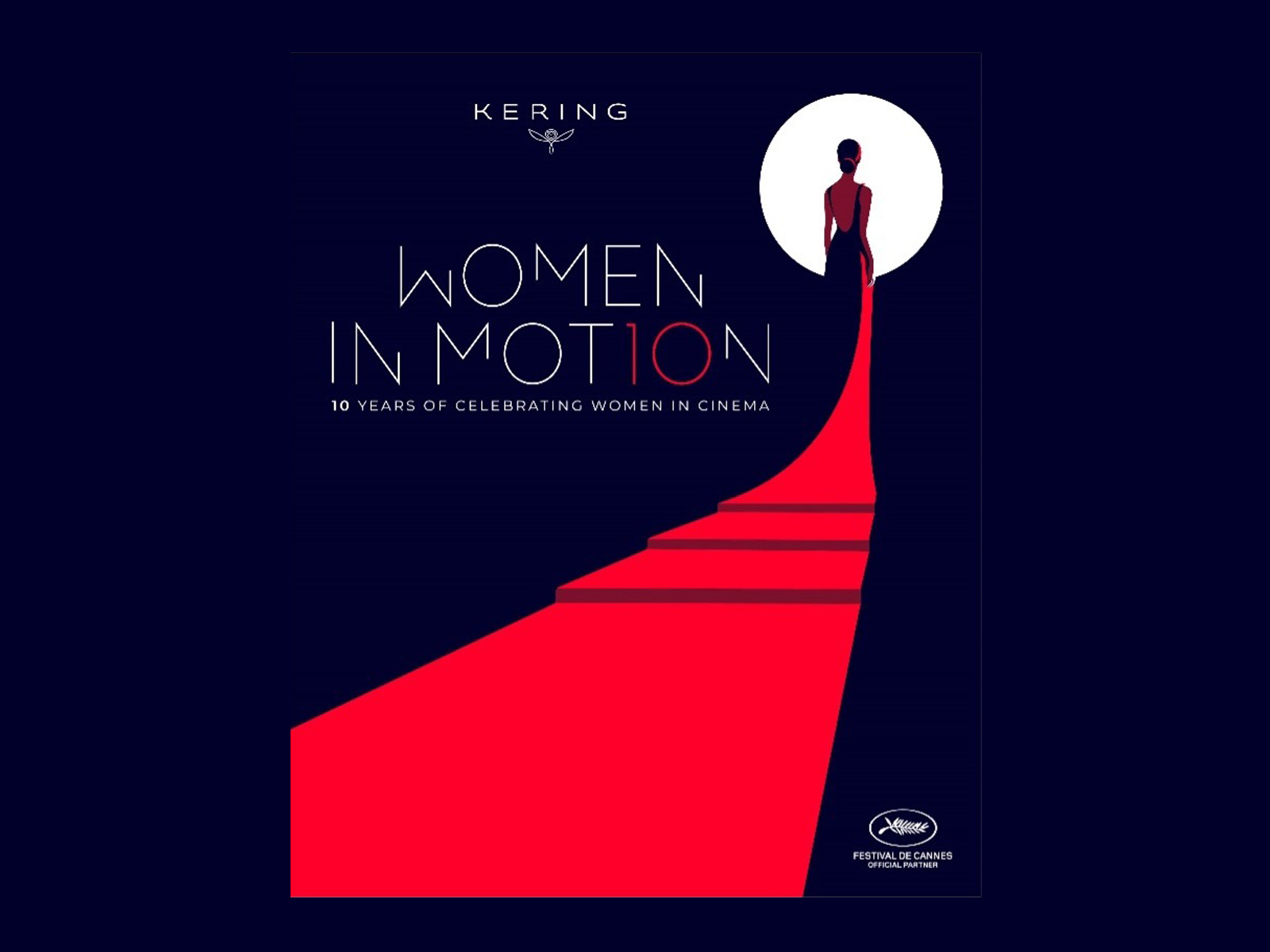
Since its launch at the Festival de Cannes in 2015, Women in Motion has become an important platform dedicated to highlighting women in the world of arts and culture. As part of the Festival, the initiative aims through its Awards, Talks and Podcasts to foster exchanges around issues of equality and better representation of women in cinema, and to provide concrete support for emerging female directors. This decade of action marks a decisive step in the Group’s commitment to fostering a space for discussion and action aimed at strengthening the recognition of women in the 7th art.
To evaluate the progress made on the subject of gender equality in the sector since the creation of the program, and to highlight the persistence of certain obstacles and the solutions that could be implemented, Kering commissioned Dr. Stacy L. Smith, professor at USC and founder of the Annenberg Inclusion Initiative, to create a study on the evolution of the place of women in cinema since 2015. By aligning the sectoral perspective with the many personalities who have spoken over the past decade as part of the Women In Film initiative, the research analyses both qualitatively and quantitatively the issues surrounding the representation of women in the film industry.
From 2015 to 2024, the share of lead characters played by women in the top 100 films at the US box office rose from 32% to 54%. While these figures represent a significant step forward, especially when we consider that films featuring female leads are as successful in cinemas as those featuring male leads, they should not mask the fact that overall, the roles taken on screen by women still very often conform to gender stereotypes. For example, over the period 2015-2023, on average, only 32% of speaking characters on screen are women; a quarter of them are dressed suggestively, and a quarter show partial nudity. These issues of women’s representation on screen and persistent stereotypes ran through many Talks, with almost 35% of participants mentioning the slow pace of change for female characters on screen and the objectification to which they are still subjected in many films, which can influence the opportunities that are subsequently offered to actresses.
The slow pace of change for women behind the camera remains evident, with the share of female directors in the top 100 box-office films in the US between 2015 and 2024 having risen from 7.5% to 13.6%. While the number of female directors has nearly doubled in ten years, they remain overwhelmingly outnumbered.
Among the obstacles identified, obtaining financing for their films remains a major issue. The financial support provided by Kering’s Emerging Talent Prize plays a crucial role in helping female creators who have released their first film. Since the program’s inception, the prize has been awarded to 11 laureates, enabling the production of 23 films, several of which have won acclaim in international competitions: Carla Simón won the Golden Bear at the Berlinale in 2022 for Nos soleils (Alcarràs), and Maura Delpero was awarded the Grand Jury Prize at Venice in 2024 for Vermiglio ou la mariée des montagnes. In 2025, Kering will present the Emerging Talent Prize to Brazilian director Marianna Brennand, for her masterful and poignant film, Manas.
Through Women In Motion, Kering reaffirms its determination to pave the way for ever more concrete and lasting equality by continuing to amplify the voice of women in the 7th art and continuing its concrete support for women directors. The recipient of the 2025 Women In Motion Award, as well as the program of Talks for the 78th edition of the Festival de Cannes, will be revealed in the coming weeks.












